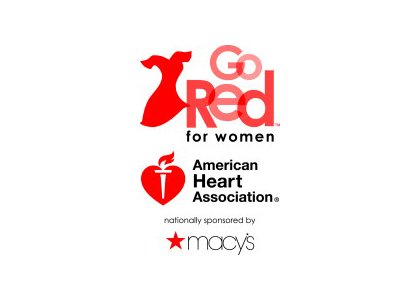The American Heart Association’s Go Red For Women and Macy’s are awarding 16 scholarships of $2,500 each to help increase the number of diverse healthcare professionals while improving culturally-sensitive, patient-centered care.
The Go Red™ Multicultural Scholarships are part of Macy’s Multicultural Fund, which was created in 2009 to increase diversity in the medical field. Macy’s is the founding national sponsor of the association’s Go Red For Women® and Go Red Por Tu Corazón awareness campaigns.
Registration for the 2014-2015 Multicultural Scholarship is open and can be accessed by visiting: www.GoRedForWomen.org/GoRedScholarship.
“At Macy’s, we are deeply committed to supporting diversity throughout everything we do,” said Holly Thomas, Macy’s Group Vice President of Media Relations and Cause Marketing. “As the founding national sponsor of the American Heart Association’s Go Red For Women movement, we are able to extend our reach into an underserved population. This includes raising awareness and creating long-term impact by helping increase diversity within the next generation of health care professionals who we know provide life-saving support to a multicultural population.
The scholarship program— now in its third year— champions greater inclusion of multicultural women in medical, nursing and allied health studies to better meet the cultural needs of racially diverse patients.
The number of minority medical school graduates is increasing steadily, according to the Association of American Medical Colleges. Among 17,341 medical school graduates in 2012, 1,163 were African-American, 1,294 Hispanic and 3,721 Asian.
However, the figures are still low compared with the population at large. For example, according to the 2010 Bureau of Labor Statistics and US Census Bureau:
*Only 5.4 percent of African-American and 3.6 percent of Hispanic nurses in the nation are registered nurses
*In contrast, African-Americans are 13 percent of the nation’s population, and Hispanics or Latinos make up 17 percent
*Minorities represent almost 37 percent of the U.S. population in total
Meanwhile, census demographics indicate that minority population growth is expected to increase in relation to whites in the coming years.
“The numbers speak for themselves, as the demographics change and more ethnically and racially diverse populations grow, there will definitely continue to be a need for healthcare providers who mirror these patients,” said Eva Gomez, MSN RN-BC CPN and scholarship judge. “Having more ethnically and racially diverse providers will make it possible to deliver healthcare that is meaningful, culturally appropriate and in the context of the person, thus making it patient and family-centered care.”
Numerous ethnic groups— including African-Americans and Hispanics— are at higher risk for heart disease. Therefore, breaking the cultural and language barriers among patients and healthcare providers can lead to better health care.
“The patient’s cultural identification, spiritual affiliation, language and gender can all affect the care they need, and their behavioral responses to illness,” Dr. Deidre Woods-Walton, National President for National Black Nurses Association.
“Throughout my 20-year career in healthcare, I’ve learned that having a cultural connection between patients and healthcare providers, impacts the provider-patient dynamic,” agreed Gomez. “The way in which healthcare providers, who look and sound like their patients, connect with them makes a positive impact on how patients and families respond, consult and accept healthcare guidance and care.”
For more information, visit GoRedForWomen.org
